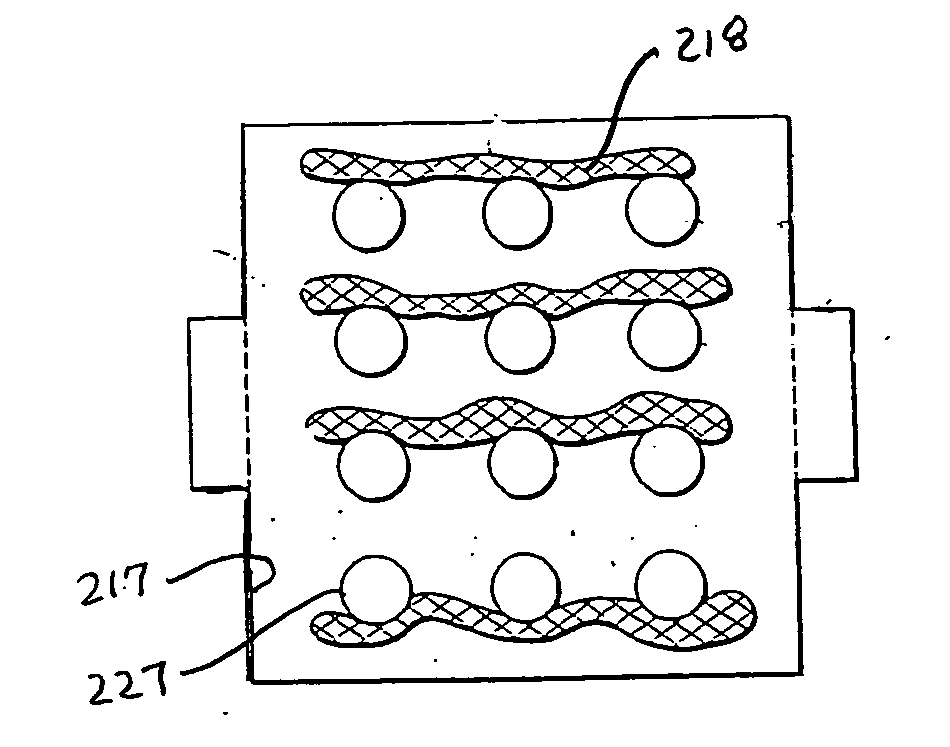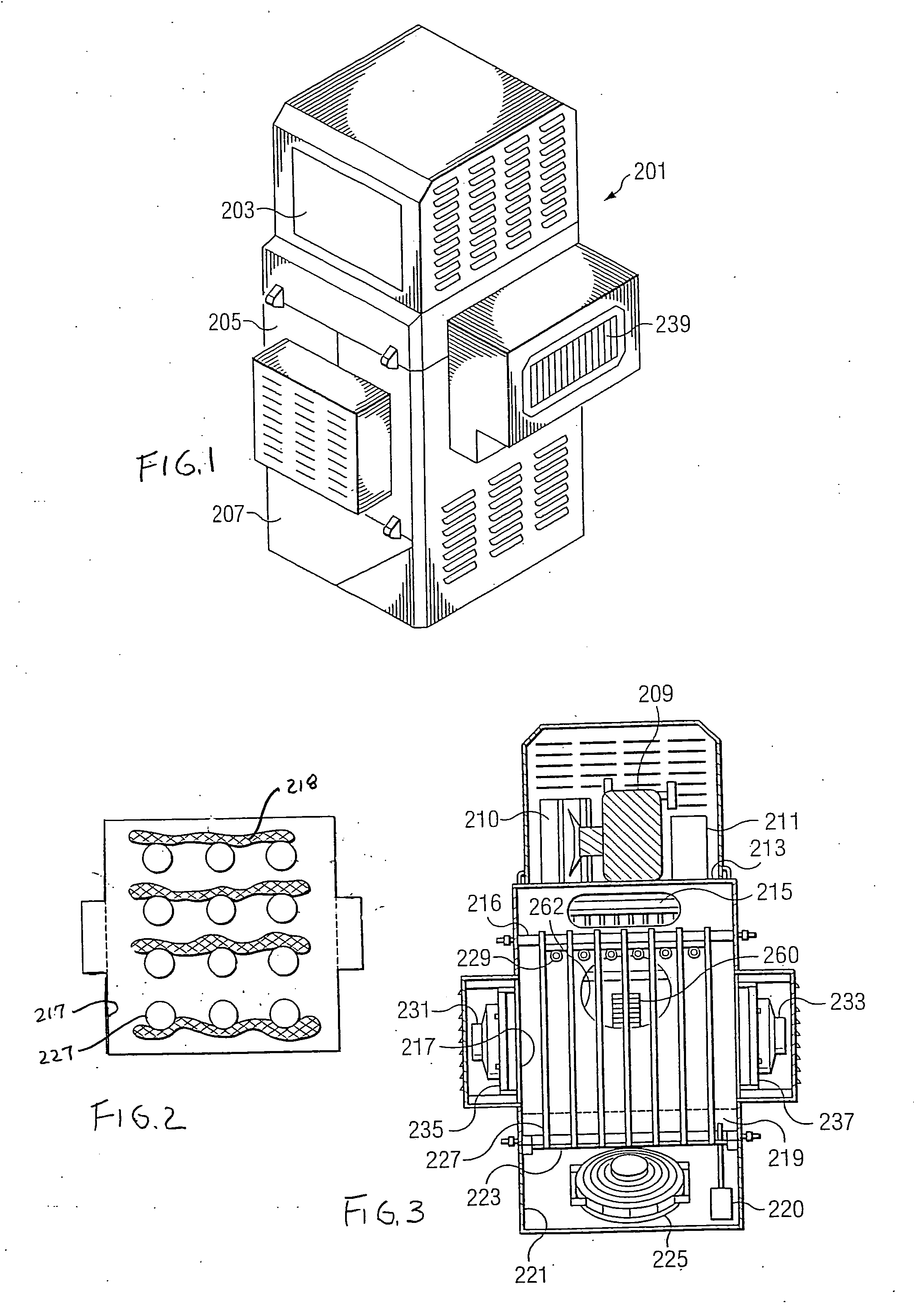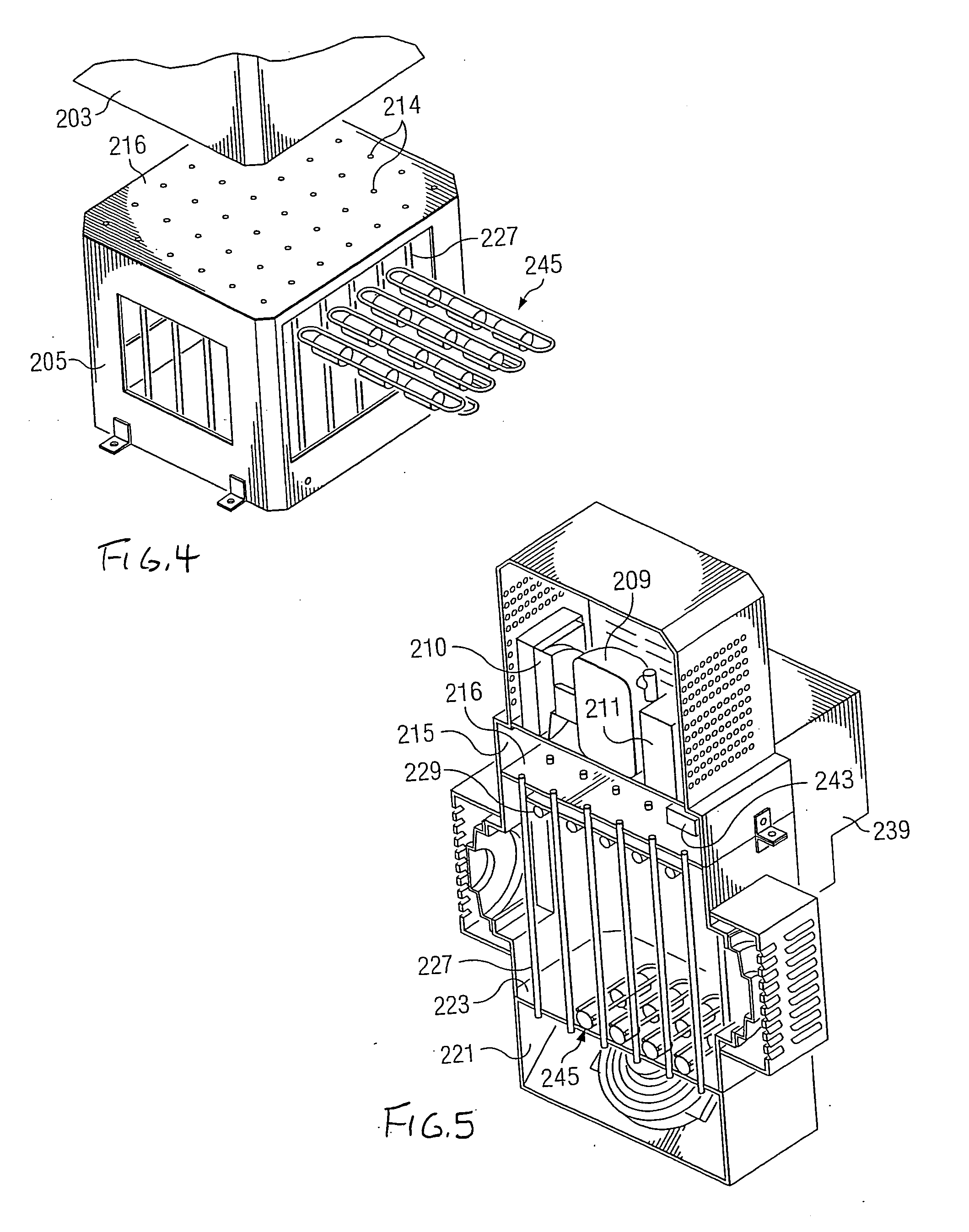Method and apparatus for generating drinking water by condensing air humidity
a technology of condensing air and humidity, which is applied in the direction of water conservation, indirect heat exchangers, light and heating apparatus, etc., can solve the problems of large drop in the rainfall rate in many populated areas, shortage or limitation of natural freshwater resources, and inability to effectively function on direct curren
- Summary
- Abstract
- Description
- Claims
- Application Information
AI Technical Summary
Benefits of technology
Problems solved by technology
Method used
Image
Examples
Embodiment Construction
[0043] Referring now to FIGS. 1-16, there is shown an air conditioning system of the invention which can be adapted for use in high temperature, low humidity environments, but which is preferably used in a higher humidity environment, including tropical or semi-tropical environments.
[0044] With reference to FIG. 1, there is shown an air conditioner 201 which is a combined direct / indirect evaporative cooler with refrigerated chilled sump water. The variable humidity device 201 shown in FIG. 1 is preferably designed as a stacked arrangement having a top section 203, a middle section 205 and a bottom section 207. A refrigeration compressor 209, an associated condenser unit 210, and a storage battery 211 (FIG. 3) occupy the top section 203 of the design and rest on a top shelf 213. The top shelf 213 forms the top wall of an exhaust air plenum 215 having an opposing wall 216. A forced-air evaporative cooling chamber (217 in FIG. 3) is located below the exhaust air plenum and occupies th...
PUM
 Login to View More
Login to View More Abstract
Description
Claims
Application Information
 Login to View More
Login to View More - R&D
- Intellectual Property
- Life Sciences
- Materials
- Tech Scout
- Unparalleled Data Quality
- Higher Quality Content
- 60% Fewer Hallucinations
Browse by: Latest US Patents, China's latest patents, Technical Efficacy Thesaurus, Application Domain, Technology Topic, Popular Technical Reports.
© 2025 PatSnap. All rights reserved.Legal|Privacy policy|Modern Slavery Act Transparency Statement|Sitemap|About US| Contact US: help@patsnap.com



